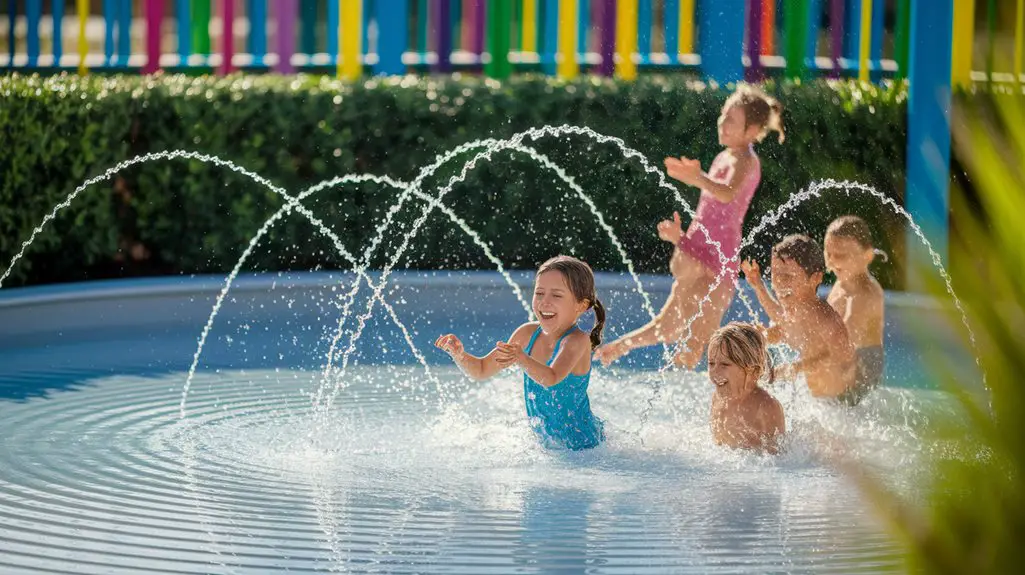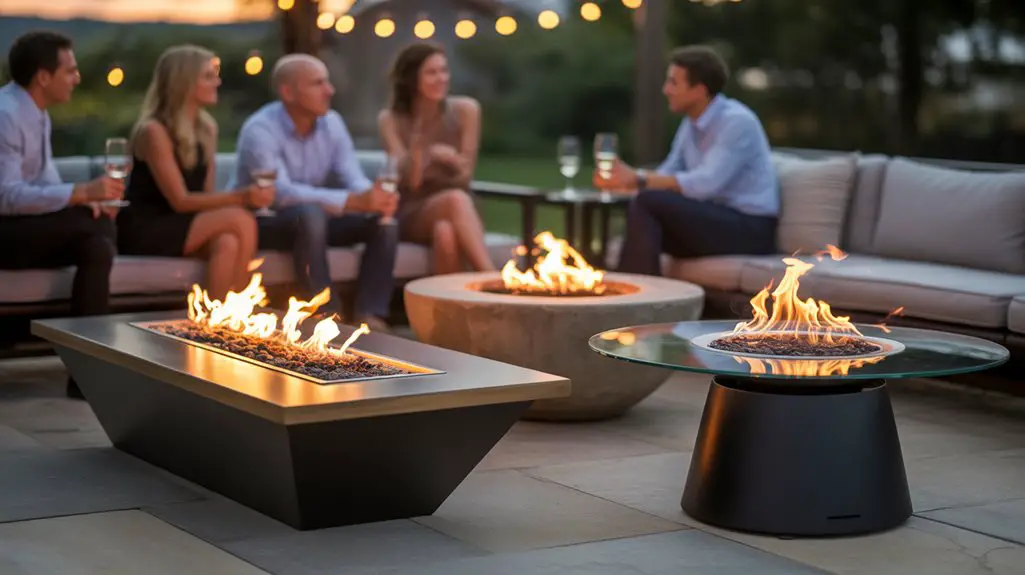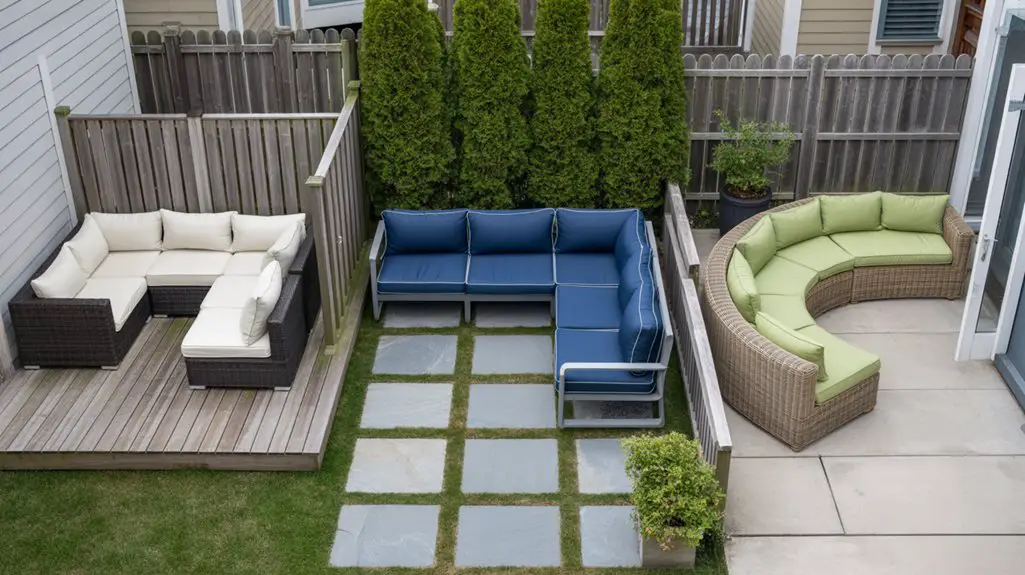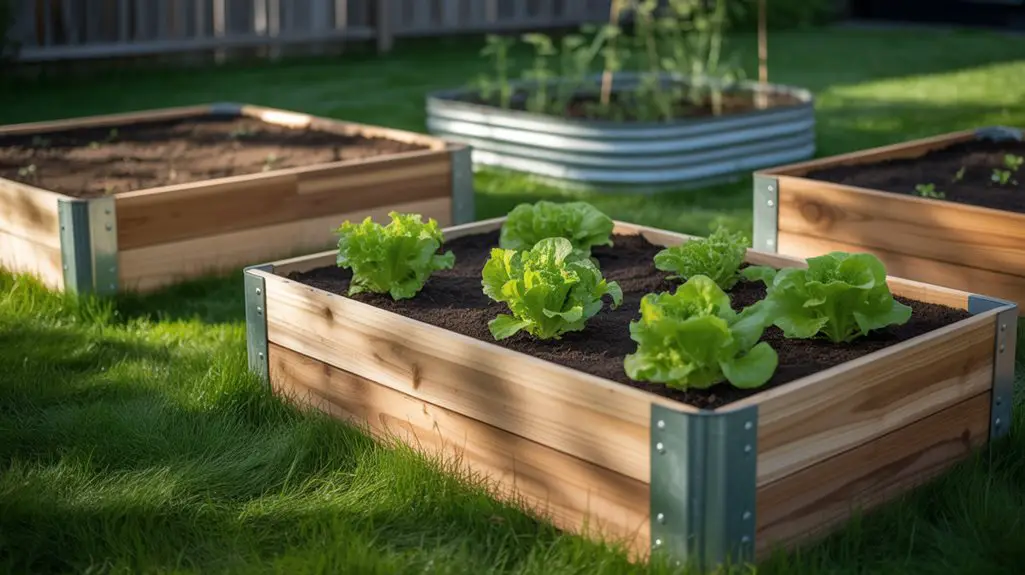Your aging backyard space may need a liquid revival to transform it into a child’s oasis. When you incorporate water features into play areas, you’ll create multi-sensory environments that engage children’s natural curiosity while developing essential motor skills. Consider how a simple splash pad can cool summer afternoons or how a gentle water wall might inspire scientific discovery. The right water element doesn’t just entertain—it fundamentally reshapes how children interact with their outdoor world.
Benefits of Water Features for Child Development
When integrated thoughtfully into play environments, water features provide multifaceted developmental benefits for children. You’ll notice improved sensory processing as children interact with varying water temperatures, pressures, and sounds. These elements stimulate neural pathways essential for cognitive development.
Water play enhances fine motor skills through activities like pouring, splashing, and manipulating flow controls. Children develop spatial reasoning by observing how water moves through channels, pumps, and cascades. They’ll intuitively grasp physics concepts—volume, buoyancy, and cause-effect relationships—through hands-on experimentation.
Social skills flourish in these settings, as water features naturally encourage collaborative play. Children coordinate efforts to dam streams, redirect flows, or fill containers.
Additionally, the calming properties of flowing water can reduce stress and anxiety, creating therapeutic opportunities within your play space design. Furthermore, incorporating water features to attract backyard animals can enhance the ecosystem of the play area, providing children with opportunities to observe and learn about wildlife in their environment.
Safe and Sustainable Water Feature Designs
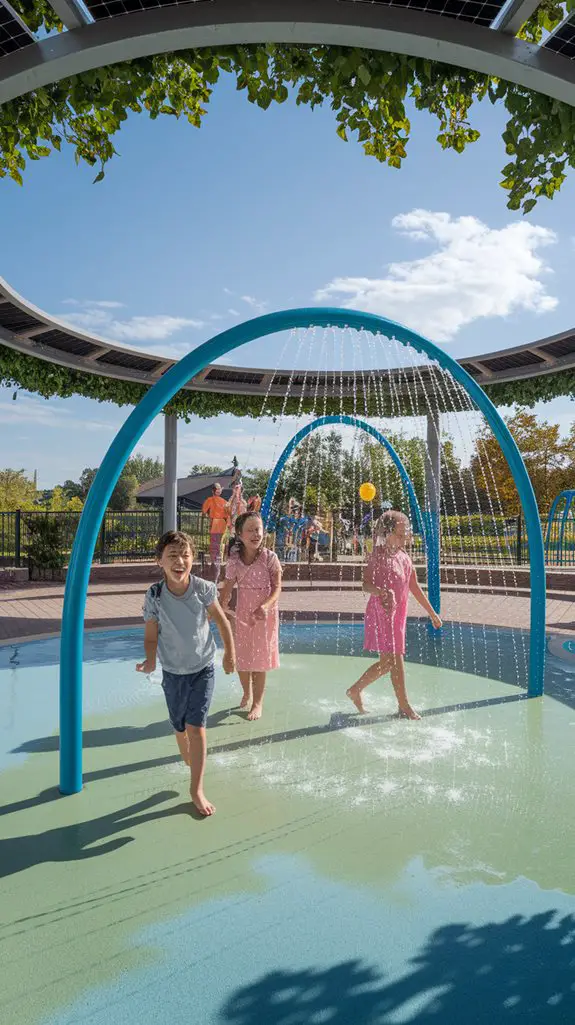
While these developmental benefits make water features highly desirable, their implementation requires careful attention to safety and environmental impact.
You’ll want to incorporate non-slip surfaces surrounding water zones and maintain shallow depths of 2-4 inches for toddler areas. Install proper drainage systems to prevent standing water and reduce mosquito breeding.
For sustainability, consider closed-loop recirculation systems that minimize water consumption. Rainwater harvesting mechanisms can supply your features, reducing municipal water dependency.
Solar-powered pumps eliminate electrical hazards while reducing energy costs.
Choose non-toxic, UV-resistant materials that withstand chlorine treatment and temperature fluctuations. Rounded edges and smooth finishes prevent injuries, while strategic placement allows for adult supervision from multiple vantage points.
Regular water quality testing guarantees ongoing safety, with automated chemical monitoring systems providing continuous oversight. Additionally, using sustainable materials in your water feature design ensures a lower environmental impact and enhances the overall eco-friendliness of your backyard.
Budget-Friendly Splash Zones for Any Yard Size
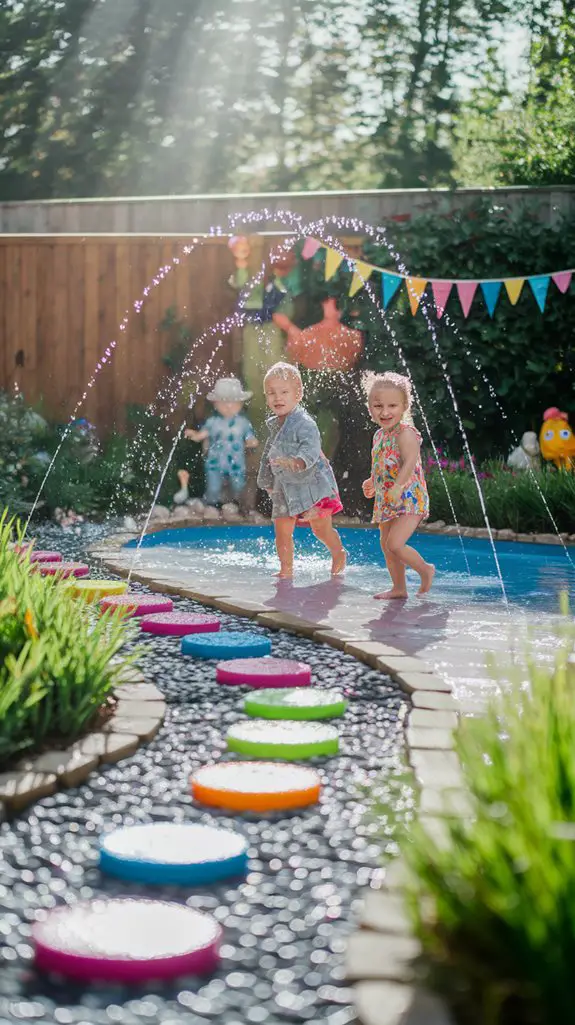
Despite common assumptions, creating engaging water play areas doesn’t require extensive space or substantial investment. You can transform even compact yards into invigorating splash zones with strategic planning and cost-effective solutions. Incorporating wildlife-friendly water features can enhance the natural beauty of your yard while attracting local fauna.
| Feature Type | Small Yard | Large Yard |
|---|---|---|
| Splash Pad | DIY PVC pipes | In-ground jets |
| Water Wall | Repurposed gutters | Multi-tier cascade |
| Sprinklers | Portable attachments | Zoned systems |
| Water Table | Compact containers | Extended stations |
| Misting System | Single-line perimeter | Multi-zone coverage |
Focus on modular components that allow seasonal disassembly for storage. Repurpose existing structures like decks or fences as mounting points for water features. Consider solar-powered pumps to eliminate electrical installation costs while maintaining circulation in smaller systems. Rainwater harvesting tanks can further reduce operational expenses.
Seasonal Maintenance and Weather Adaptations
To guarantee your water features remain functional throughout changing seasons, proper maintenance routines must evolve with the weather patterns in your region.
Install freeze-resistant pumps in northern climates and implement automated drainage systems to prevent ice damage during winter months.
During fall, clear debris regularly from filtration components and consider installing mesh guards over water inlets.
In summer’s heat, monitor water levels daily and install shade structures to reduce evaporation and algae growth.
Spring requires thorough system inspection—check for cracked pipes, worn seals, and calibrate water pressure systems.
For year-round adaptability, invest in modular components that can be reconfigured seasonally.
Consider smart controllers that adjust water flow based on temperature readings, conserving resources while maintaining ideal performance regardless of weather fluctuations. Additionally, incorporating rainwater harvesting can enhance your water feature’s sustainability by utilizing a natural water source for maintenance.
Integrating Water Play With Other Backyard Activities
Creating a cohesive outdoor experience requires thoughtful integration of water features with existing backyard elements. Position splash pads adjacent to sandboxes for seamless shifts between wet and dry sensory play. You’ll maximize spatial flow by connecting water walls to garden paths, encouraging movement throughout the yard. Additionally, incorporating backyard entertainment zones can enhance the overall enjoyment of your outdoor space.
| Activity Pairing | Design Approach | Spatial Consideration | Material Selection |
|---|---|---|---|
| Splash pad + Sandbox | Buffer zone with pavers | 5′ minimum separation | Non-slip composite decking |
| Water wall + Garden | Stepped elevation changes | Drainage toward plantings | Weather-resistant timbers |
| Misters + Dining area | Overhead pergola mounting | Wind direction analysis | Stainless steel fixtures |
| Fountain + Fire pit | Circular arrangement | 8-10′ safety clearance | Heat-resistant stonework |
Install quick-connect water outlets throughout your yard to enable temporary water play stations that don’t interfere with permanent structures, maintaining versatility in your landscape design.
Conclusion
As you transform your outdoor canvas, water features become the heartbeat of your play area’s design. You’ll find that strategically placed splash zones and meandering channels create a flowing ecosystem of joy where children thrive. When you’re mapping your water elements, think in layers—vertical splashes, horizontal streams, and ground-level interactions—creating a multidimensional experience that evolves with the seasons and grows with your family.

